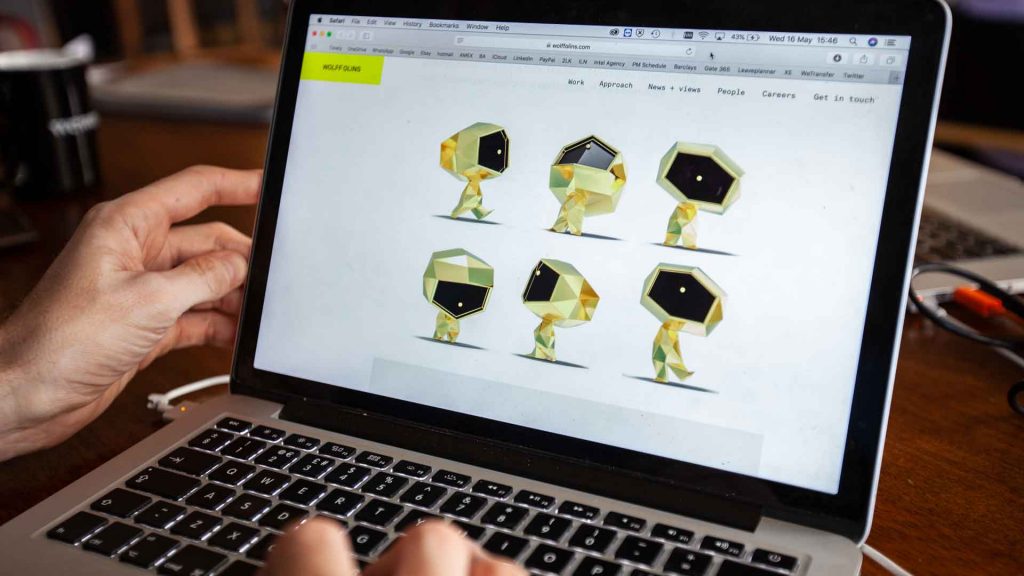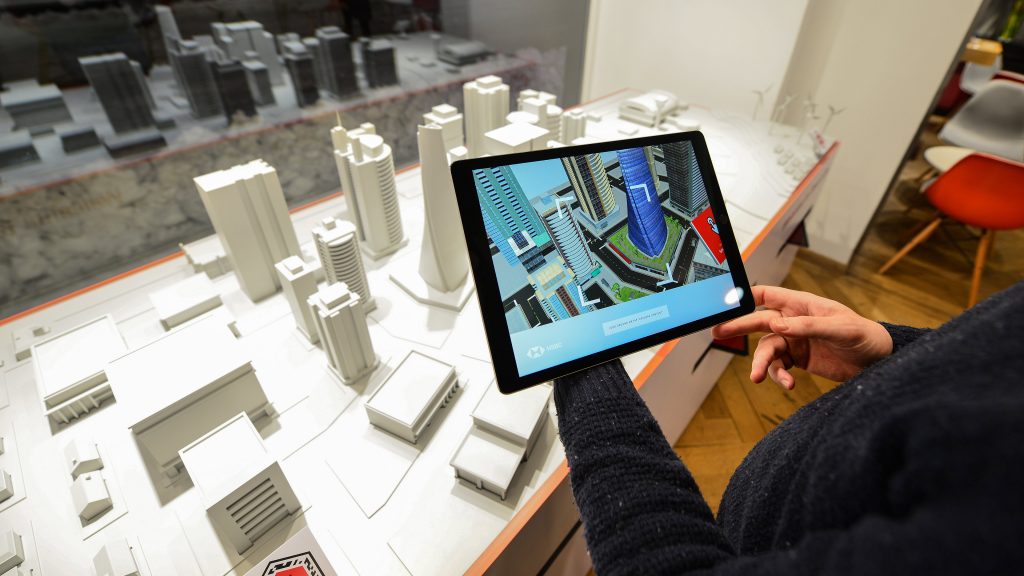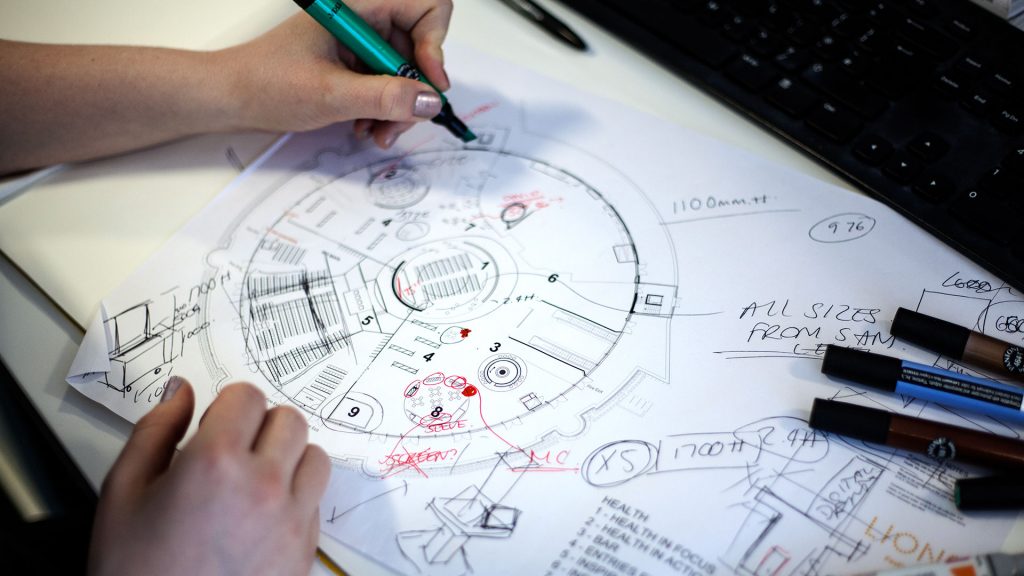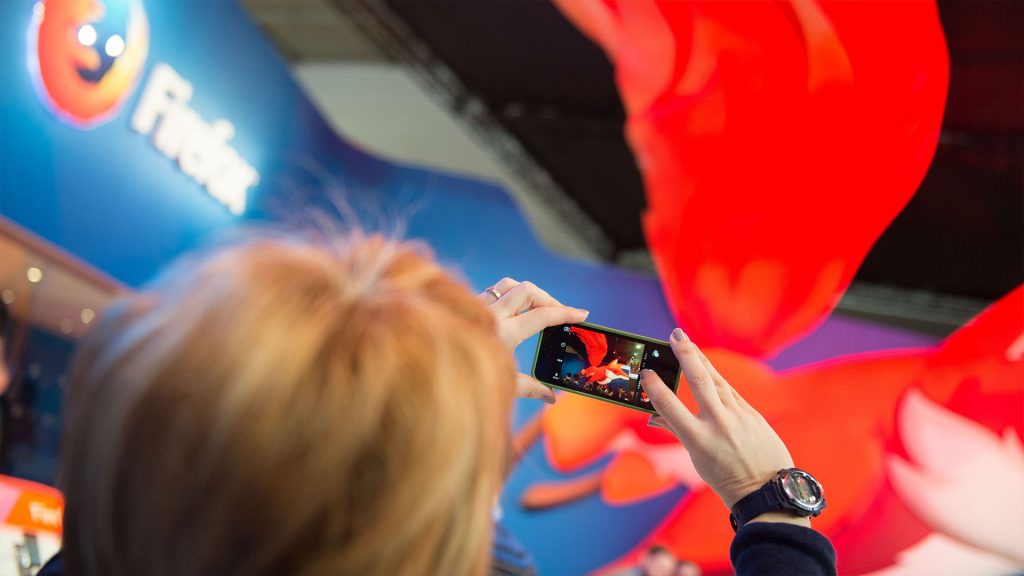Five Cs of Artificial Intelligence and live brand experiences.
First published as a two-part series in Event Industry News, our Creative Director looks at the five Cs of Artificial Intelligence (AI) – communication, control, consumption, creation and contrast – and how they will impact the future of live events and brand experiences.
AI has been the stuff of sci-fi since the 1950s – think 2001: A Space Odyssey, Star Wars, Blade Runner and The Matrix. AI is now very real and it’s shaping our lives in countless ways: algorithms actively influence our purchasing decisions, the entertainment we consume, the routes we travel, and even the people we choose to date.
According to market intelligence firm Tractica, the Artificial Intelligence software market will skyrocket to reach US$89.8 billion in annual worldwide revenue by 2025. In the same timeframe, Forrester expects that cognitive technology will replace 7 per cent of jobs in the USA. It’s real, it’s high value and it’s happening right now.
There’s a tendency to overestimate the effect of technology in the short-term and underestimate its effect in the long run. A big promise up front, initial disappointment and then results that far exceed the original expectations. Computers, digital photography, solar/wind power, DNA and even grocery home delivery all evolved to this pattern. I think it’s safe to assume that this phenomenon (known as Amara’s law) will repeat itself with AI. According to Adobe’s 2018 Digital Trends survey, 31% of nearly 13,000 marketing, creative and IT professionals worldwide plan to invest in AI in the next 12 months.
I’m not an engineer, no fan of sci-fi, and certainly not an AI scholar, but I’m often surrounded by emerging technology and have spent years consulting for some of the world’s smartest tech brands. Does that make me qualified to make predictions? Maybe not, but I’m keen to join the AI conversation, armed with a healthy obsession about the future of live events and brand experiences in terms of this complex and fascinating subject.
Communication
Today’s AI systems are actually relatively narrow in what they do and how they communicate. Everybody’s new best friends Siri and Alexa are perhaps the most iconic, accessible and endearing forms of AI – machines that learn, but ultimately obey. AI-powered, voice-activated apps are on the rise. With My Starbucks Barista, users pre-order their coffee of choice by talking to a virtual barista and it’s then readied for collection. Embedded AI algorithms can track purchases, recommend similar products and generate offers entirely personalised to you. These machine learning communication systems offer a pretty decent value exchange for both buyer and seller.
Similar systems will pop up in many other brand experience channels. Access to real people will become more and more limited. This could actually drive up the value of live events as opportunities to experience the human side of brands. Consumers will always want to communicate in a natural, conversational way with real people, so authentic live brand experiences will become an even more essential part of the marketing mix.
Chatbots are also on the rise, with most big brands deploying systems centred around carefully programmed ‘personalities’ trained to embody and emulate genuine brand ambassadors – witness Alibaba Cloud’s ET Brain with it’s own ‘face’. Live events are already employing AI chatbot and facial recognition systems for delegate registration, and we’ll soon see a rise in AI supporting pre-event marketing and post-event surveys.
Running an agency that’s obsessed with design effectiveness, that final area interests me most. Surveys traditionally consist of a static series of questions. Just imagine if we could blend – in real-time – the required methodological consistency of a controlled survey with the ability to actively adapt to customers’ responses to gain deeper, more valuable user insights.

Control
Analytic systems are now capable of tracking event attendee behaviour through iterative video evaluation. Not just their physical activity, but their emotional responses, combined with an almost scary level of demographic profiling. This goes far beyond metrics and measurement into a new realm of control.
It enables highly targeted and personalised content delivery to reflect specific audience interests. For example, my agency is now actively working with Movidius (a super low power, low-cost and small-scale AI chip) on a digital experience that uses recognition systems and real-time analytics to create playful, personalised content streams. As this tech becomes more defined, we’ll rapidly move beyond simple measurement of behavioural metrics into highly targeted digital content delivery. These personalised content streams will result in entirely new ways to blend physical and digital.
This level of user tracking also gives brands access to an amazing amount of data, which ultimately translates into control. Knowledge is power. The data economy is here. Unlike retail and hospitality, live events are exceptionally short moments in time, so the ability to measure performance and make immediate changes is like gold. Ultimately, real-time predictive analytics should allow us to iteratively improve the experience for both brand and customer.
So, who’s really in control? Many AI systems are founded on providing users with increasingly simple methods of control, through voice for example. However, I think users are ultimately losing control. Our choices are increasingly restricted, based on a computer’s perception of what it thinks we want. Amazon Echo searches only return a single audio response, rather than being an AI entity that challenges and offers us several alternatives.

Consumption
There’s no doubt that personalisation drives action, and AI’s most significant promise currently revolves around the delivery of more personalised experiences. Netflix and Amazon recommend entertainment that’s bespoke to our tastes, Apple Maps has learned our travel schedules, Facebook can choose our friends and LinkedIn suggests new business contacts.
Brands will soon commission multiple content streams around a single theme, with each theme targeted to different emotional states: happy, sad, funny etc. AI systems will then push the most appropriate version to individuals, defined via probability mapping. This will move us far beyond simple and singular profiling (like age or gender) into a realm of complex algorithmic assessments on our unique preferences. This sort of predictive user modelling could bring delight and simplicity to delegates pre-, during and post-event, but it would no doubt narrow our choices. Let’s hope personalisation doesn’t just become generalisation.
Personalisation is great, but how do we provide entirely unique content in the live event space? I believe AI and AR (Augmented Reality) will soon become inseparable, and together become a mainstay of live brand experiences. Everyone will have a powerful AR device on them at all times to access entirely unique versions of the same ‘reality’. AR is a live event storyteller’s dream. It complements the physical space and digitally amplifies it, allowing us to each see the world differently. AR is site specific, so the more bespoke the physical space, the more powerful the experience. It’s also social – a group of people can have concurrent communal experiences. This blend of physical and digital design will become a funnel for AI customisation at live events. The result will be immersive, unique, and above all memorable.

Creation
Creativity is the Holy Grail for many AI analysts. By its very nature the design process involves non-linear thinking, a challenger approach and the ability to reason with one’s environment. AI currently revolves around deep learning which is very different – adapting and improving things rather than creating new things.
AI catapulted into the mainstream when IBM’s ‘Watson’ won $1 million on Jeopardy in 2011. The same cognitive platform created a movie trailer for 20thCentury Fox’s movie Morgan. AI systems write pop music and even have the potential to mimic great works of art as per Deepmind’s recent experiments.
Last year Adobe launched their Adobe Sensei platform. It’s more IA (Intelligent Assistant) than AI (Artificial Intelligence). Whatever you call it, the creative process is fundamentally changing, as machine-learning algorithms begin to absorb the more time-consuming tasks within creative processes. For example, Wix has an ‘Artificial Design Intelligence Service’ that creates a stunning website tailored to your needs, instantly and for free. Scary stuff for web designers, and it’s just a matter of time before brand experience and live event design is also affected.
Personally, I’m excited to see the innovation in this space, and strongly believe that new AI tools will actually support the growth and efficiency of the creative community. Jeff Kowalski, CTO of Autodesk, echoed this when he said: “Designers will eventually be more like mentors for computers, using their experience to train the machines that do the actual work”.

Contrast
AI will undoubtedly become a valuable tool for brands’ relationships with customers and may even streamline the design process itself, but for me there’s already too much focus on technology for technology’s sake. It’s essential that consumer expectations are met with genuine personality and interactions that connect on a human level.
I’m a great believer in designing for people first. Technology changes rapidly, but human beings don’t. It’s often the simple things that we remember, share and care about. I can see great potential for extremely low-tech brand experiences to blossom, an antidote to tech proliferation.
Fundamentally, events are for people. Good events are built around stories, good stories tend to be about people, and the best stories are shared with other people. Let’s hope we can continue to find space for these exceptionally simple, human-centric experiences by way of contrast to the high-tech society in which we all live.
Thanks to plummeting hardware costs and some recent innovation leaps, AI is now a reality that will no doubt revolutionise what we do, how we do it and how we measure it. With Millennial and Generation Z audiences craving experiences over possessions, and with the (AI) doors firmly open, live events and brand experiences can only become increasingly personalised. With that, let’s hope they also become increasingly powerful.

Special thanks to Event Industry News for first publishing Part One on 9 May 2018 and Part Two on 16 May 2018.
More reading: